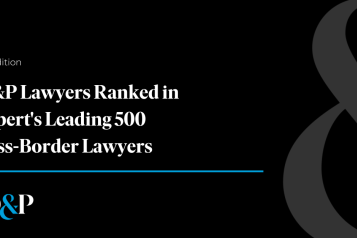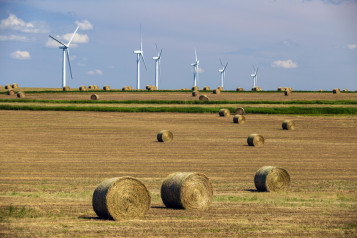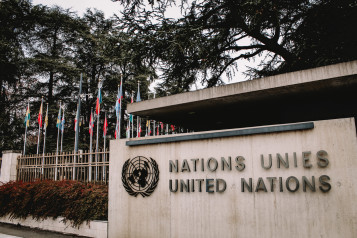Publication
Alberta introduces mandatory abandonment spending and new liability management framework
Published July 30, 2020
On July 30, 2020, the Government of Alberta released a statement and factsheet announcing high-level changes to the regulatory regime that governs oil and gas liabilities to address the growing number of inactive wells in the province.
The statement introduced new and revamped programs. The current Licensee Liability Rating (LLR) program will be replaced with a broader Liability Management Framework (LMF) that includes several components and expands the Alberta Energy Regulator's (the AER) powers to include mandatory minimum payment obligations for inactive sites, a new forum for landowners to request that operators conduct abandonment and reclamation activities on their land and a new process to address legacy and post-closure sites. The Government announcement also emphasized the recently expanded role of the Orphan Well Association (OWA) in conducting abandonment and reclamation work.
Given the current economic climate, the Government appears to be cognizant that the new regime must balance environmental accountability against abounding liquidity concerns within the oil and natural gas industry. On the date of the announcement, Sonya Savage, Alberta's Energy Minister, stated:
"I think what we need to know is that we've got an industry that's in distress right now...[a]nd it needs to be rolled out sensitively, keeping in mind the financial [situation]."
License Capability Assessment System
Over the past several years, the Government of Alberta and the AER have indicated that the LLR is an inadequate measure of licensees' financial health and eligibility to transfer licences. The LLR will be replaced by a "licensee capability assessment system", which will consist of a "more comprehensive and accurate corporate health assessment by taking into account a wider variety of assessment parameters" in addition to assets and outstanding reclamation liabilities.
The Government's stated intention is to use the new LMF to better assess "the capabilities of oil and gas operators to meet their regulatory liability obligations, prior to receiving regulatory approvals." The LMF will also include "Licensee Special Action", through which the AER will have a broader mandate to monitor the financial health of operators and provide proactive support before companies fall on hard times. The AER will be empowered to provide additional oversight to at-risk and distressed companies in order to "manage and maximize their assets, and maintain their operations" and avoid having their abandonment and reclamation obligations fall to the OWA.
The LMF is currently only a high-level framework, the details of which will be implemented "in the coming months". We expect that the AER may amend its current directives or introduce new rules to set out these changes.
Mandatory reclamation spending
A significant departure from the status quo is the introduction of minimum annual spending requirements towards the cleanup of oil wells, pipelines, and facilities. In a statement provided to the Daily Oil Bulletin, Minister Savage compared the mandatory spending to "paying down a mortgage"—the program will encourage ongoing service to companies' abandonment and reclamation obligations. The framework will retain the current "polluter-pays" principle, by proportionally allocating companies' spending requirements based on the size of their inventory of inactive assets.
The Government of Alberta has not announced the final payment structure, but Minister Savage has stated that companies "may be required to spend at least four per cent of the estimated cost of their inactive wells, which would increase over time." The AER is expected to establish five-year rolling spending targets for reclamation that active site operators must meet. The minimum spend requirement will operate in conjunction with the AER's Area-Based Closure program, which allows operators to work together to share the costs of fulfilling abandonment and reclamation obligations on multiple sites in a single area.
The AER will be responsible for the administration of this requirement— including monitoring progress, working with the oil and natural gas industry, and enforcing noncompliance. The AER has not yet established the penalties that will be assessed against operators for failing to meet minimum spending levels.
Notably, the Government has confirmed that, unlike British Columbia, Texas and Colorado, Alberta's revitalized regulatory regime will not impose mandatory abandonment and reclamation timelines. Minister Savage has cited Alberta's significant inventory of property to be reclaimed, and the inflexibility of a timeline-based program as rationale for why no timelines for reclamation have been included.
New forum for landowners
The announcement also included the introduction of a new forum by which landowners may "opt-in", and nominate sites on their land to be prioritized for reclamation. The AER will be responsible for managing nominations, and will review and assess landowners' requests. Operators implicated in a landowner nomination will have the opportunity to justify to the AER why a site should not immediately be brought through the closure process.
Legacy and post-closure sites
Finally, the new framework will introduce a new process to manage sites that have been abandoned, remediated, or reclaimed before current standards were put in place, and sites that have received a reclamation certificate whose operator's liability period has lapsed. The Government will establish a new panel to consider how best to bring these sites up-to-date with current environmental requirements, and who will be responsible for those efforts.
Expanded Role of the OWA
The Government's announcement also highlighted the OWA's expanded role under Bill 12, the Liabilities Management Statutes Amendment Act SA 2020 c.4 (the LMSA), which came into effect on June 15, 2020. Under the LMSA, the OWA's expanded jurisdiction includes the power to:
- operate viable orphaned wells and produce oil and natural gas while the OWA solicits a purchaser for such assets;
- enter into agreements to engage third parties to operate orphaned wells and pipelines;
- apply to the Alberta Court of Queen's bench for an insolvency professional to take control of orphaned assets; and
- use the Orphan Well Fund to "pay for costs associated with the full life cycle management of wells and well sites, facilities and facility sites and associated infrastructure".
***
The July 30th announcement comes in addition to the April 2020 announcements of the Federal Government's pledge of $1.2 billion to the Government of Alberta and the OWA to support abandonment and reclamation work, as well as the Government of Alberta's introduction of the Site Rehabilitation Program.
The timing for the implementation of the LMF and related initiatives are unclear at this time. The July 30th announcement introduces a measure of uncertainty for operators amidst the current economic downturn and the COVID-19 pandemic, particularly because it is not clear what the financial requirements will be. The introduction of increased financial obligations may put an added strain on operators, and the announcement of the LMF, without the program details, adds a level of unpredictability to Alberta's oil and natural gas transaction landscape. As they say, the devil is in the details.



